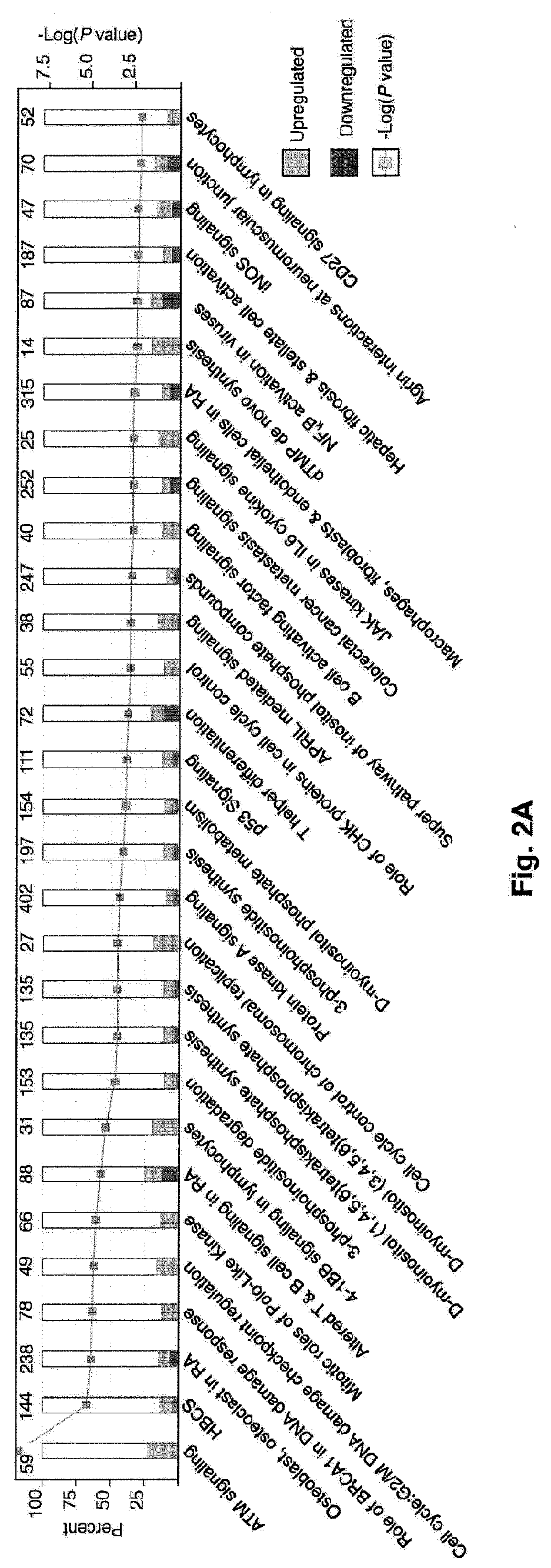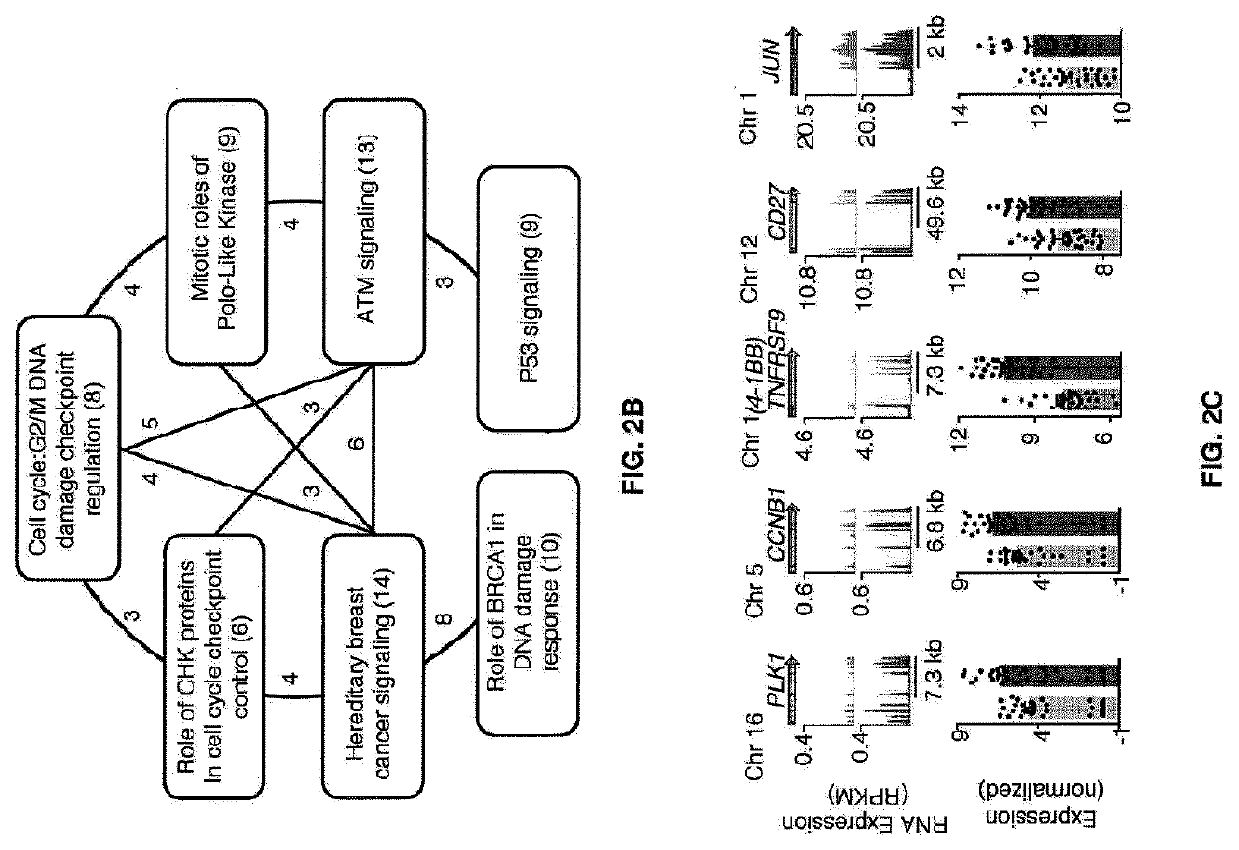Compositions for cancer treatment and methods and uses for cancer treatment and prognosis
a cancer treatment and composition technology, applied in the field of compositions for drug compositions, biochemistry apparatus and processes, blood/immune system cells, etc., can solve the problems of significant variation in the degree of infiltration of tils, and achieve the effects of increasing the probability and/or duration of survival, and reducing the risk of cancer survival
- Summary
- Abstract
- Description
- Claims
- Application Information
AI Technical Summary
Benefits of technology
Problems solved by technology
Method used
Image
Examples
example 1
ofiling of CD8+ Tumor Infiltrating Lymphocytes
Results
Major Transcriptional Changes Characterize Tumor-Infiltrating CTLs
[0279]To identify the core transcriptional signature of tumor infiltrating CTL's (CD8+ TILs), the inventors performed RNA sequencing (RNA-Seq) of purified populations of CD8+ T cells present in tumor samples (CD8+ TILs) from 36 patients with treatment-naïve early stage non-small cell lung cancer (NSCLC), categorized based on their histological subtype into adenocarcinoma and squamous cell carcinoma (Table 2). Matched transcriptional profiles of CD8+ T cells isolated from the adjacent non-tumor lung tissue (CD8+ N-TILs) were matched to discriminate features linked to lung tissue residence from those related to tumor infiltration. To assess the conservation of the transcriptional program of CD8+ TILs in a related solid tumor of epithelial-origin, a similar data set generated in 41 patients with head and neck squamous cell carcinoma (HNSCC) from both human papilloma vi...
PUM
| Property | Measurement | Unit |
|---|---|---|
| Volume | aaaaa | aaaaa |
| Volume | aaaaa | aaaaa |
| Volume | aaaaa | aaaaa |
Abstract
Description
Claims
Application Information
 Login to View More
Login to View More - R&D
- Intellectual Property
- Life Sciences
- Materials
- Tech Scout
- Unparalleled Data Quality
- Higher Quality Content
- 60% Fewer Hallucinations
Browse by: Latest US Patents, China's latest patents, Technical Efficacy Thesaurus, Application Domain, Technology Topic, Popular Technical Reports.
© 2025 PatSnap. All rights reserved.Legal|Privacy policy|Modern Slavery Act Transparency Statement|Sitemap|About US| Contact US: help@patsnap.com



